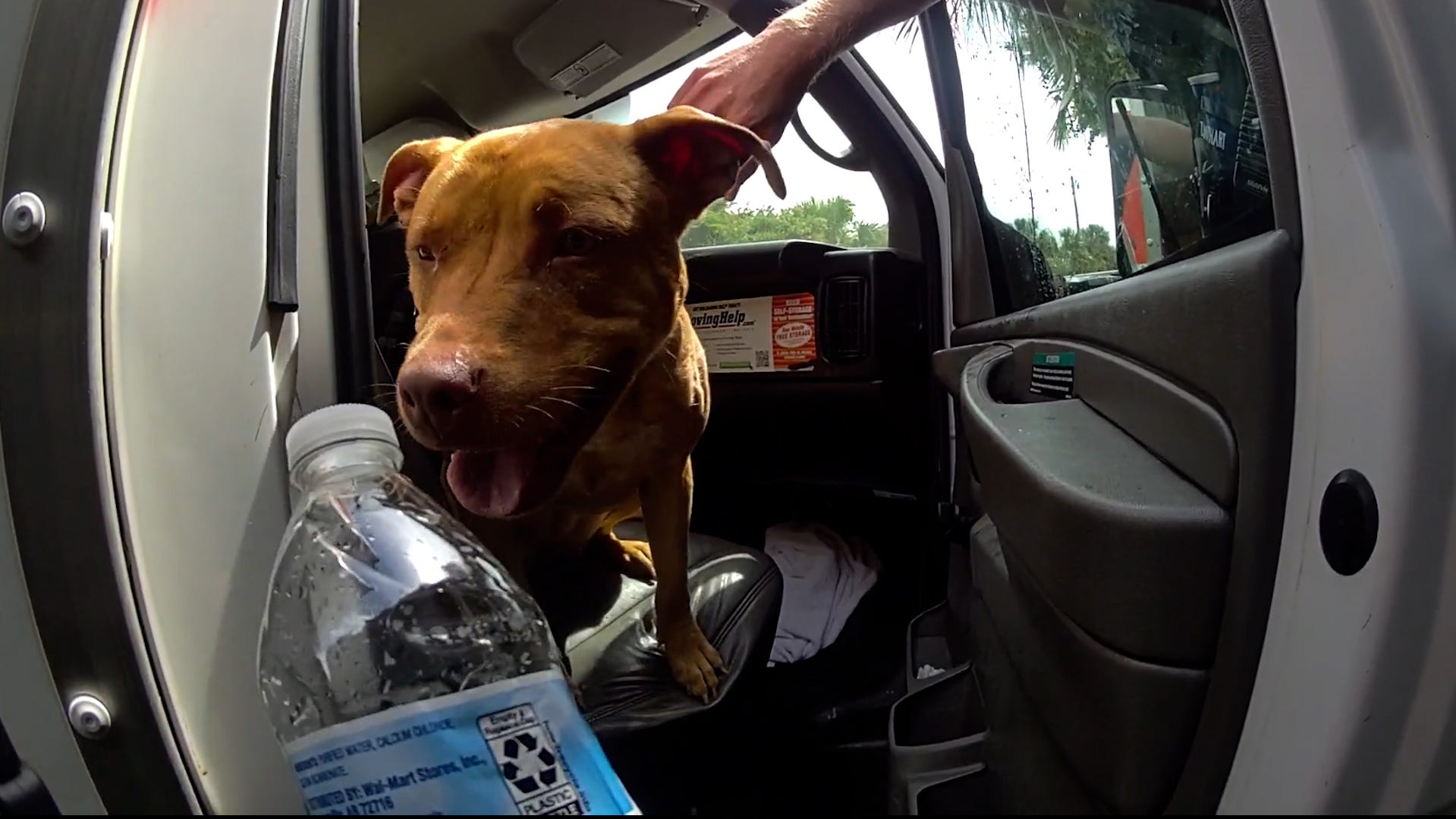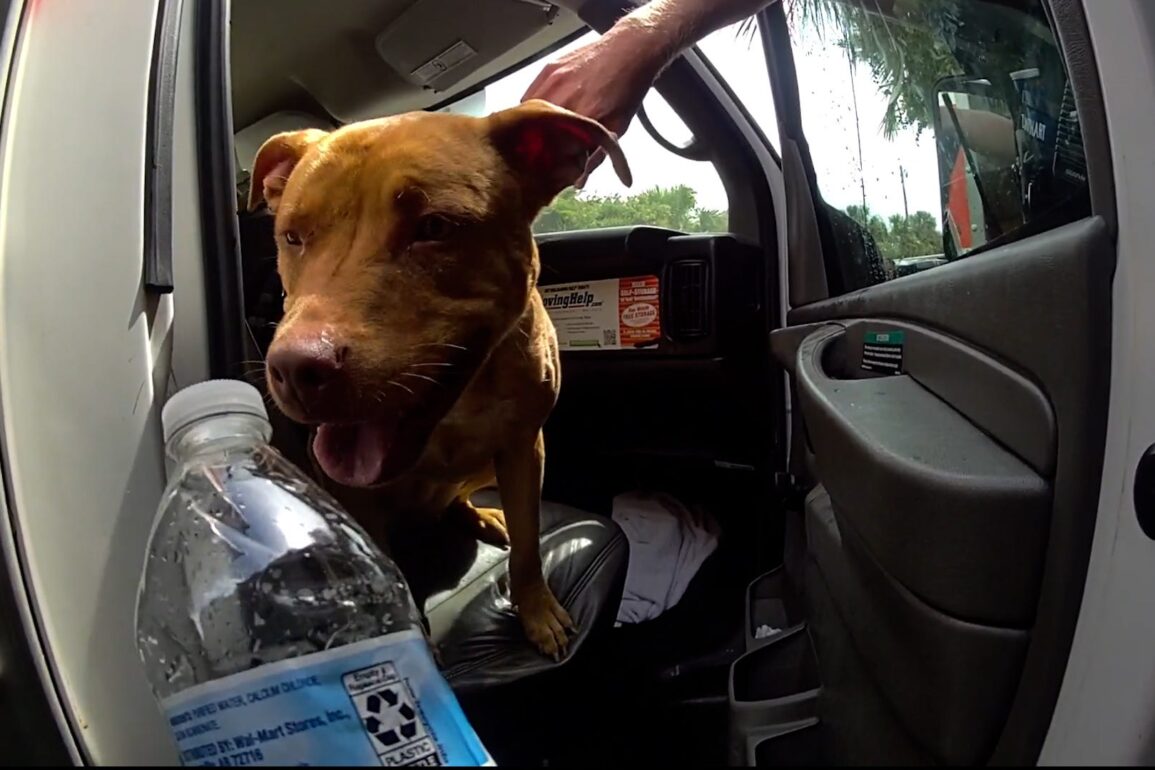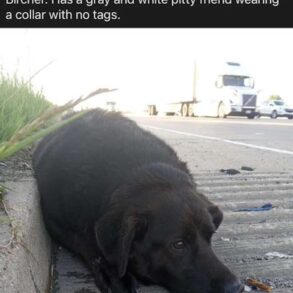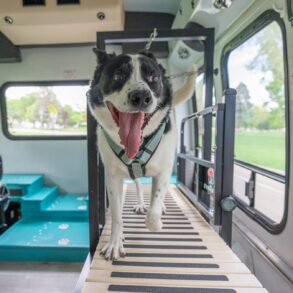
Watch: Dog saved from scorching U-Haul
New Smyrna Beach police officers rescued a dog from a hot U-Haul on a day where the vehicle temperature could have been at least 100 degrees.
- Never leave a dog in a parked vehicle, even for short periods, as temperatures can rise quickly, leading to heatstroke or death.
- Brachycephalic breeds, obese dogs, and those with dark coats are at higher risk for heatstroke.
- If you see a dog in distress in a hot car, contact law enforcement and you may be legally protected if you forcibly enter the vehicle to rescue the animal under specific conditions.
Florida is a great place for dogs, with several beaches that welcome your best friend to roam around and dog cafes, bars and parks in many coastal towns and cities.
But while you’re traveling with your furry friend, do not leave your dog locked inside a vehicle in the Florida sun, even for a short period.
“When it’s 72 degrees Fahrenheit outside,” the Humane Society of America said, “the temperature inside your car can heat up to 116 degrees within an hour.” Even sitting in a hot vehicle for a short time could mean irreversible organ damage or death.
Last year, when the New Smyrna Police Department cracked the window of a U-Haul truck to rescue the heavily panting pit bull dog trapped inside, the temperature outside was 86 degrees, but “the temperature inside the vehicle was likely 100 degrees or more,” the NSBPD’s Facebook post said.
This weekend, temperatures in the Sunshine State are expected to reach the mid to upper 90s across most of the state.
What if you spot a dog trapped in a hot car? Are you allowed to smash a window? Here’s what to know.
Never leave an animal inside a vehicle

Hot vehicles can become deadly in practically no time
The heat can kill. When temperatures outside reach 100 degrees, temperatures inside a car can get up to 138 degrees in 5 minutes and 150 degrees in 15 minute. Here are ideas on how to reduce the risk of forgetting a child or pet.
Wochit, Wochit
Dogs regulate their body temperature by sweating through their paws and panting, and neither is effective in a hot metal box.
Heatstroke in dogs is especially dangerous for breeds with short noses and flat faces, according to the American Kennel Club. That’s pugs, boxers, bulldogs, Boston Terriers and French bulldogs (and pit bulls, although the AKC doesn’t recognize that as a breed).
“Due to their unique anatomy, these breeds are not able to cool themselves as efficiently because of inefficient breathing and panting,” the AKC said. “Dogs that have had heatstroke before, obese dogs, and those with dark coats are also at higher risk for heatstroke.”
Leaving dogs in a hot car may also be illegal in Florida
Florida’s animal cruelty definition also applies to anyone who “carries in or upon any vehicle, or otherwise, any animal in a cruel or inhumane manner.”
Violations mean first-degree misdemeanor charges, penalties and/or fines up to $5,000 for the first offense. Second and subsequent offenses get a mandatory minimum fine of $5,000 and at least six months in jail without the option of parole or any form of early release.
Signs of heatstroke in dogs
If a dog is overheated and left untreated, it can be fatal. These are the signs of heat stress and heatstroke in dogs, according to the AKC.
- Heavy, frantic panting
- Dehydration
- Body temperature over 105.8 degrees and your dog feels warm to the touch
- Excessive drooling
- Bright red gums
- Rapid or irregular heart rate
- Vomiting
- Seizures
- Muscle tremors
- Lack of coordination (ataxia)
- Unconsciousness
If your dog is exhibiting any of these symptoms, get them somewhere cool, provide cool water and call your veterinarian immediately. You can run cool water over them or put a cool wet towel on their body.
What should I do if I see a dog locked in a hot car?
If you see a dog locked inside a car, check first to see if it is in distress. Is the air conditioning on? Just a cracked window may not be enough in Florida. Is the driver nearby, or can they be quickly found? Has the dog been there for longer than a few minutes? Don’t immediately assume a dog in a car is in trouble, the owner might already be running back.
If the dog is clearly suffering and the owner cannot be located, call 911 or a nearby law enforcement officer for help and forcibly enter the vehicle if instructed to do so. Be sure to have a leash, belt, purse strap, or other way to secure the dog once you’ve freed it.
Florida law protects people who break into vehicles to rescue pets or vulnerable people from harm from liability for damages as long as:
- There’s no way for the pet or person to get out
- They have a reasonable belief that the pet or person is in imminent danger of suffering harm
- They have contacted law enforcement or 911 either before or immediately after breaking in
- They use no more force to do so than is necessary to remove the pet or person
- They remain with the pet or person in a safe location near the vehicle until law enforcement or a first responder arrives
This post was originally published on this site be sure to check out more of their content.












































